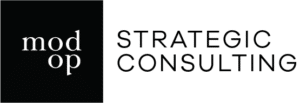Hundreds of companies have been on the Fortune 500 list over the years. However, only 52 have been listed consistently since its inception in 1955. What separates those 52 from the rest of the pack?
The ability to adjust quickly and effectively as the world changes around them.
While these economic titans – including Boeing, IBM, and Procter and Gamble – operate across a variety of industries, they all excel in being agile. Organizations that want to be able to drive sustained growth must be able to “turn on a dime”.
Agility is not a quality to possess when it’s convenient. It’s a requirement for long-term success.

When we talk to clients about agility, they often nod their heads and agree. Of course they want to be more agile; they know they need to be. But many leaders aren’t sure how to get there.
Most traditional companies don’t necessarily focus on agility as they grow into market leaders. As discussed in The Innovator’s Dilemma, successful companies often become successful by developing a good idea and then being great at execution. But that’s not enough.
Responding to the market faster than the competiton
As demonstrated above, companies who succeed long-term are the ones who excel at agility. In other words, they’re skilled at responding to needs and market shifts before their competitors, and they can turn even the biggest ship around quickly. They identify what consumers want and deliver on that successfully.
Consumers have always transformed much more rapidly than the companies they buy from. As a result, it’s our job as leaders to close that gap and move fast — or be left behind.
Improving agility is about three key areas: Culture, processes, and focus.
#1: Agility demands a strong culture.
You can’t react faster by merely wishing for better agility. You need to define what agility means in your industry or market, set clear goals, and communicate those goals to everyone in the organization. You need to orient the culture around speed and responsiveness, and not just continue to do what has been working up until now.
That means rewarding change before change is necessarily an imperative, being open to new and bold ideas from up and down the hierarchy, and empowering employees to move quickly.
Leaders must be clear and outspoken about what they value, and that messaging must percolate through every division, task, and role. This means:
- Educating employees about what it means to embrace change
- Discussing how that belief should guide their day-to-day activities and thought processes.
- Structuring compensation and promotion around not just execution but innovation and flexibility.
Become a place that doesn’t just support and retain workers but attracts and rewards the true agents of change.
#2: Processes drive performance.
Traditional companies talk about annual technology budgets and five-year strategies, but long timelines don’t work in today’s world. A year is a long time to be locked into a particular budget allocation, and five years is an eternity when it comes to strategy. It’s easy to miss potential pivots and fail to make required changes if you can’t act quickly.
I used to work for a Fortune 500 company that stopped doing annual budgets entirely. Project funding was approved on a month-by-month basis. It changed our entire focus.
How do you launch your big project without knowing your annual budget?
You can’t.
We were forced to think small and prove value quickly. We experimented, and the initiatives that generated results continued to get funded and grew bigger and bigger.
Does someone have a $3 million idea? Here’s $50K; come back in two months, show me what you’ve done, and then we’ll talk again. Did you prove it out? Here’s $250K more; come back in six months. Success? Great; here’s your three million dollars.
It’s like venture capital – companies start with a “friends and family round,” and then get bigger from there, but only as progress becomes evident.
Agility is not only about budgeting processes.
Project reviews and personnel reviews shouldn’t just be happening once a year. Some should happen more often, and some should happen continuously. We talk to a lot of executives who tell us they go out and get customer feedback every time their companies launch a new product or service. But customer feedback is something you should be getting every day.
If you don’t have a process for constant customer feedback, you’re not set up to be an agile organization.
You need to look at every team, every process, every bit of workflow in your organization and figure out which ones are stopping you from being able to make quick pivots and maximize your flexibility.
How can you build in more feedback, more opportunity for iteration, more data sharing, and iterative decision making? That’s how you become more agile.
#3: Agility only happens if it takes center stage.
It’s too hard and too fundamental to the entire organization to be kept in the background. That’s not to say other priorities can’t share focus, but agility has to remain among them.
Culture and processes are hard to change, and organizations will revert to old ways if not continuously nurtured and supported.
If the leadership isn’t on board, and if the rank-and-file isn’t provided good reasons to get on board as well, change will fail.
When change fails, the stakes are high.
While technology often gets the spotlight, agility and change management deserves the center stage. These components are just as essential if you want to remain ahead of the competition with new products and revenue – a core competency for success in the coming decades.
Sign up for the bi-weekly dBrief email:
Adriann Bouten, CEO & Founder
Adriaan is an expert in the future of business in the digital age. Having led transformations of such companies as McGraw-Hill and USAToday, Adriaan helps mid-sized organizations identify and execute digital growth opportunities through cohesive strategy, effective technology, and digital transformation.
Explore additional executive insights and guidance from our team of consultants, all of whom have decades of operational experience making exactly the kinds of decisions you now face, or browse the library of case studies.
Client Impact Story: Marketing Automation
Discover how Mod Op Strategic Consulting helped transform a leading law firm’s ability to produce and track its digital messaging and communication.
Client Impact Story: Improving Workflow Processes
Considering robotic process automation (RPA)? Review the process we used to introduce RPA to a leading financial publisher.
















